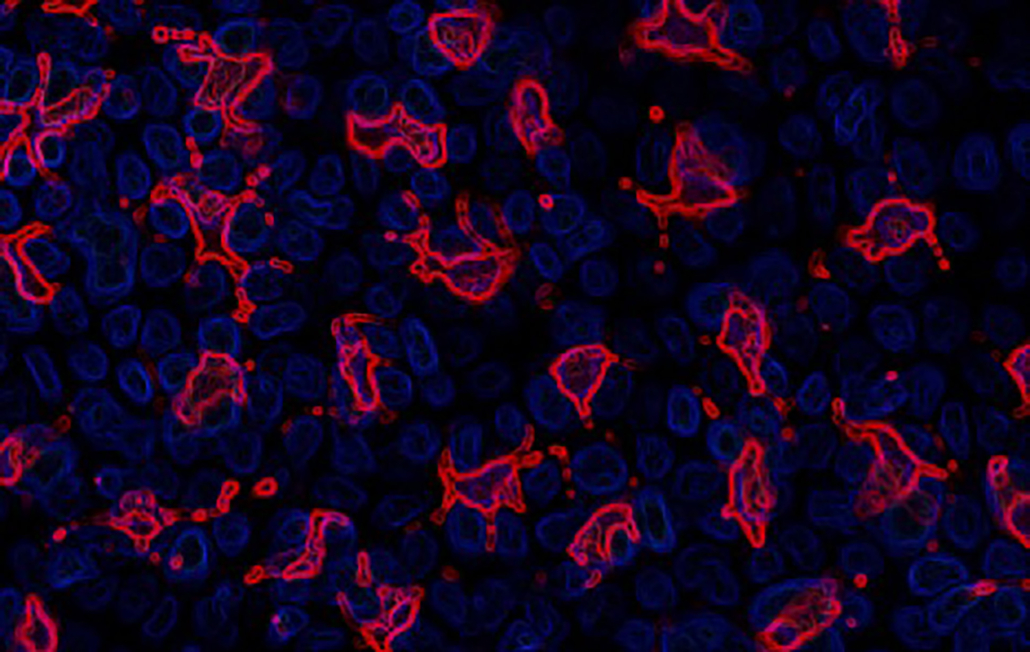
New lupus target unraveled
EGFR agonists support the protective effect of Langerhans against UV-induced damage of skin cells, a hallmark of lupus erythematosus and other autoimmune and dermatologic conditions, a team of US and German researchers report.
Lupus affects approximately 1.5 million US-Americans. One of the most common lupus symptoms is photosensitivity, which occurs when the skin becomes highly sensitive to ultraviolet (UV) radiation. Photosensitivity is a major concern for patients because it can result in disfiguring skin rashes as well as joint pain and fatigue. Although strategies such as avoiding the sun and using sunscreen can help prevent lesions from forming, currently there is no causative treatment.
The researchers headed by Theresa Lu from Hospital for Special Surgery in New York now discovered in a mouse model that mimics the symptoms of lupus that light sensitivity arises partly due to malfunction in a cellular protective mechanism. Analyses of mouse models and samples from lupus patients suggest that repairing the distorted interaction between Langerhans cells and keratinocytes within the skin could bring relief to patients not only with lupus but also other autoimmune disorders.
The newly discovered partnership between keratinocytes and Langerhans cells acts as a bulwark against UV-induced skin damage. Langerhans cells support immune function in the skin, but also have another function, which had been unknown so far. In healty mice, they limited keratinocyte apoptosis by activating a receptor named EGFR.
In mouse models of photosensitive lupus, however, Langerhans cells didn’t show their protective effects. What’s more, skin samples from lupus patients had decreased numbers of Langerhans cells. Treating the lupus mice with a topical formulation of EGFR activator reduced the severity of UV-induced lesions. Mechanistically, Langerhans cells express EGFR ligands and a disintegrin and metalloprotease 17 (ADAM17), the metalloprotease that activates EGFR ligands. Deletion of ADAM17 from Langerhans cells led to photosensitivity, and UV radiation induced ADAM17 activation in Langerhans cells and generation of soluble active EGFR ligands, suggesting that Langerhans cells protect by providing activated EGFR ligands to keratinocytes. Lu et al. thus want to elucidate further EGFR’s potential as a workable target in the treatment of lupus.


 Bayer AG
Bayer AG
 Picture from Ferdinand Stöhr on Unsplash
Picture from Ferdinand Stöhr on Unsplash